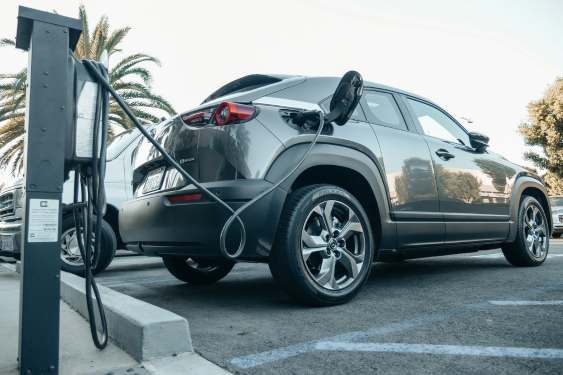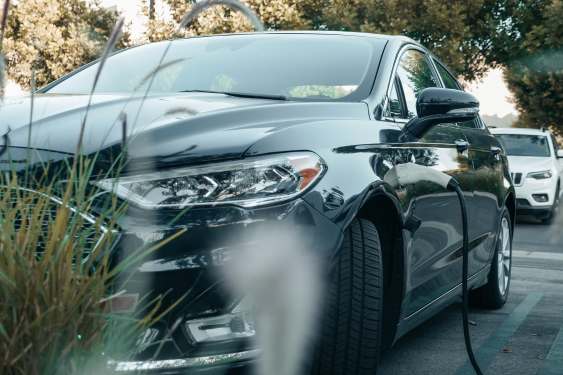
Written by Kayla Jane Barrie Updated on Feb 25, 2025 4 mins read

Did you know there are three common types of hybrid cars?
Hybrid cars are becoming increasingly popular on our roads. Whether hybrids, plug-in hybrids, or fully electric vehicles, the demand for electric cars will likely continue to rise. Consumers are looking for ways to save money on fuel and make their road trips more eco-friendly and are exploring the pros and cons of hybrids.
In 2021, Canada broke a record with 86,032 electric vehicles being registered, accounting for 5.3% of total vehicle registrations for that year. This is a significant increase compared to the 56,165 electric cars registered (2.9% of total registrations) in 2019 and 19,696 (1% of total registrations) in 2017.
Here is a look at the three types of hybrid cars every driver should know.
While shopping for a hybrid car, you will likely come across terms like HEV and PHEV, which are used to describe the types of hybrids. Here’s a look at the key differences:
An HEV hybrid car can be classified into mild hybrid and full hybrid.

A full hybrid vehicle can drive solely on battery power and operate in fuel-efficient, zero-emission mode for up to 62% of the time on average. This is due to its powerful battery, which significantly benefits the environment and fuel economy.
In contrast, a mild hybrid vehicle cannot drive on pure battery power alone and delivers considerably fewer benefits than a full hybrid.
A mild hybrid is a hybrid car with a small electric generator in place of the traditional starter motor and alternator. This technology helps to increase fuel efficiency and reduce CO2 emissions. The electric generator provides extra power for fuel-intensive activities such as rapid acceleration or restarting after a stop.
Additionally, mild hybrids can harvest energy during braking and store it in the battery for later use, providing extra electric assistance.
The primary difference between full hybrid and plug-in hybrid cars is their electric batteries. The electric battery is the car's primary power source in a plug-in hybrid. The internal combustion engine takes over when the battery runs out of charge. On the other hand, in a full hybrid, the battery only provides enough power to drive the car at slower speeds, such as in residential areas and cities.
There are a few differences between a plug-in hybrid and full hybrid vehicles. One of the main differences is the battery size and cost. The electric battery in a plug-in hybrid is larger and more expensive to replace than that in a full hybrid. Additionally, the charging capabilities differ between the two types of hybrids.
While a plug-in hybrid may recharge a little through regenerative braking, it relies more on an external power source to fully recharge due to its larger battery. On the other hand, a full hybrid can recharge its electric battery through regenerative braking by converting the heat created by the braking process into electricity that the battery can store.
One similarity between plug-ins and full hybrids is that if their batteries run down, both cars become gasoline-powered cars. Use this table for a quick summary of plug-in hybrids vs. full hybrids:
| Key Notes | Full Hybrid | Plug-in Hybrid |
|---|---|---|
| Electric power | Power the car at slower speeds | Power the car in all uses |
| Battery size and cost | Smaller, less expensive | Larger and more expensive |
| Recharging | Regenerative braking | Comes from an external power source |
| Gasoline power (ICE) | Used in most driving conditions | Used simultaneously or only when electric power runs low |
Hybrid, plug-in hybrid (PHEV), and mild hybrid vehicles differ in how they utilize their electric and combustion engines. Here’s a breakdown:
Self-charging hybrids don't require plugging in, making them great for first-time drivers. Plug-in hybrids cut fuel costs and are perfect for testing before going fully electric. Mild hybrids have simpler components, lower costs, and drive like traditional cars. The answer to which is better is the one that suits your needs..
The most common type of hybrid to buy are mild and full hybrids. Most people don’t have easy access to charging stations but want to switch to a greener drive, so they don’t opt for plug-ins.
Hybrid, plug-in hybrid, and fully electric vehicles differ in battery size, plug-in ability, and electric motor power. Hybrids balance traditional and electric cars, offering more efficiency and less emissions than regular cars.
When choosing a hybrid, consider your driving habits, priorities, and feasibility. If you can't install a charger, a plug-in hybrid may not be practical, and it may require frequent stops to recharge on long drives. However, a plug-in hybrid may suit your needs. Don’t forget to get a quote for hybrid car insurance during your search!
| Categories | Auto |
|---|---|
| Tags | Buy and Sell VehiclesElectric |
Read our insurance blog to get helpful tips, information and news.
Dive into the world of auto theft with our blog on the most stolen cars in Canada. See the most stolen cars across Canada, including provincial lists for Ontario and Quebec, and learn how high-risk models can affect your car insurance premiums.
Drive safe this winter! Check out these tips for driving in snowy and icy conditions in Ontario. Get other helpful info and FAQs on winter driving.
Drive safer this winter. Learn how the right set of winter tires drastically reduces stopping distance and risk on ice and snow. Get expert tips from your trusted insurance provider.
Ontario municipalities have until November 14 to remove all automated speed enforcement cameras following fast-tracked provincial legislation. This post breaks down why the government is removing them, the pushback from road safety advocates, and what alternative measures will replace them.